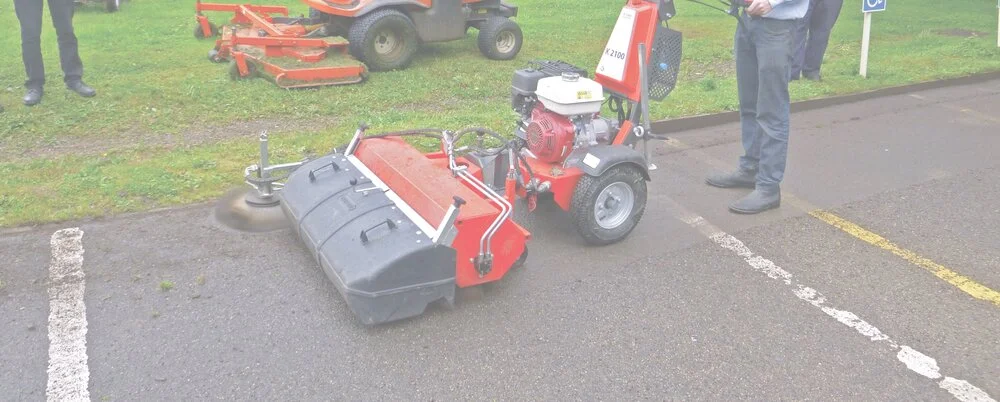Asphalt and Tarmac Surface Maintenance

Asphalt and Tarmac Surface Maintenance
Tarmac and Asphalt Surface Maintenance: Ensure Longevity, Performance, and Safety
Tarmac and asphalt surfaces are popular choices for driveways, roads, and parking lots due to their durability and cost-effectiveness. However, to keep these surfaces in top condition, regular maintenance is crucial. Proper care can prevent common issues such as cracks, potholes, and surface deterioration, ensuring that your tarmac and asphalt remain functional and visually appealing for years to come.
Maintaining Tarmac and Asphalt for Longevity and Safety
Tarmac and asphalt surfaces, commonly used in roads and driveways, require consistent upkeep to prevent common issues such as detritus build-up, surface displacement, and freeze-thaw damage. Without proper maintenance, debris like leaves and dirt can accumulate, obstructing drainage systems and creating conditions for moss and weeds to thrive. Freeze-thaw cycles can exacerbate these issues by expanding and contracting moisture trapped in surface cracks, leading to further deterioration.
Prevent Damage
Regular maintenance is crucial to prevent damage and maintain the quality of tarmac and asphalt surfaces. Using a powered sweeper helps remove debris before it decomposes and clogs drainage systems. Employ a gully brush to clean debris from pavement edges and ensure effective drainage. Cutting back overgrown vegetation and keeping pavements clear of organic material also helps reduce moisture retention and prevent surface damage.
Remedial Work
For surfaces affected by detritus build-up and freeze-thaw damage, prompt action is necessary. Use a Kersten weed brush to remove weeds and moss, and follow up with a powered sweeper to collect loose debris. Repair any cracks and displaced sections to restore the surface's integrity and prevent further deterioration. Regular maintenance and timely repairs will ensure that your tarmac and asphalt surfaces remain durable, safe, and visually appealing.
Weeds thrive on tarmac and asphalt surfaces when detritus, such as leaves and twigs, accumulates in gullies and along pavement edges. This buildup creates a medium for weeds to grow. Once weeds establish themselves in the debris, their roots can penetrate the surface, leading to cracks and further surface damage. Over time, the cracks widen, causing the surface to crumble and form potholes. Regular use of a gully brush and powered sweeper with a collector box is essential for clearing debris from edges and gullies, preventing detritus from rotting and providing a breeding ground for weeds. This helps maintain the integrity of the surface and prevents costly damage.
A freeze-thaw cycle refers to the repeated process of water freezing and thawing within the surface cracks of tarmac or asphalt. When water freezes, it expands by about 10%, putting pressure on the surrounding material. This repeated expansion and contraction weaken the tarmac, causing cracks to widen and surface deterioration.
Organic material, such as leaves, soil, and debris, exacerbates freeze-thaw damage. These materials collect in cracks and gullies, trapping moisture. As the moisture freezes, it expands and exerts additional pressure on the tarmac. The decomposition of organic material further contributes to erosion, creating a cycle of damage. To mitigate these effects, regularly use a gully brush and powered sweeper with a collector box to remove organic debris and maintain effective drainage. Timely repairs of cracks and surface damage are also crucial in preventing further deterioration.
Moss growth on concrete surfaces is typically caused by the accumulation of organic material, such as leaves and soil, combined with excess moisture. These conditions create an ideal environment for moss to thrive. Organic material collects in cracks and low-lying areas of the concrete, trapping moisture that facilitates moss growth.
To prevent moss from growing on concrete, follow these steps:
- Regular Sweeping: Use a powered sweeper with a collector box to remove debris and prevent detritus build-up. This reduces moisture retention and eliminates potential growth mediums for moss.
- Gully Brush Maintenance: Employ a gully brush to clean debris from the edges of pavements and in gullies. This ensures that water can drain properly and prevents the accumulation of organic material.
- Proper Drainage: Maintain and clear drainage systems to ensure effective water runoff. Standing water encourages moss growth, so efficient drainage is crucial.
- Cut Back Vegetation: Trim overgrown plants and remove organic debris to minimize moisture retention and reduce shaded areas where moss is likely to grow.
- Regular Inspections and Repairs: Check for and repair any cracks or surface damage that could trap moisture. Timely repairs help maintain the integrity of the concrete and prevent moss from establishing.
By implementing these practices, you can keep your concrete surfaces clean, reduce moss growth, and extend the lifespan of your concrete.
When deciding between a sweeper and a weed brush for asphalt and tarmac maintenance, consider the specific issues you're facing:
- Sweeper: Ideal for removing loose debris, leaves, and dirt that accumulate on the surface and in gullies. A powered sweeper with a collector box is effective in preventing detritus buildup, which can obstruct drainage and lead to moss and weed growth. It is also useful for cleaning edges and keeping pavements clear. Our pedestrian sweepers also come with a de-moss brush, which helps remove moss and algae that may have started to grow on the surface.
- Weed Brush: Best for tackling established weeds and moss that have penetrated the surface. A weed brush can effectively remove these invasive plants, which can cause surface cracks and deterioration over time. It’s particularly useful in areas where weeds have started to penetrate the tarmac, causing damage.
Recommendation: For comprehensive maintenance, use a combination of both tools. Start with a weed brush to address any existing moss and weeds, then follow up with a sweeper to clear the surface and prevent further issues. This dual approach ensures both removal of vegetation and effective debris management, maintaining the integrity and appearance of your asphalt or tarmac surfaces.